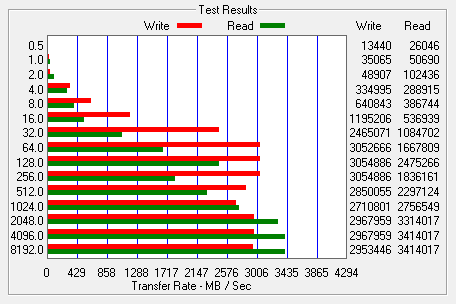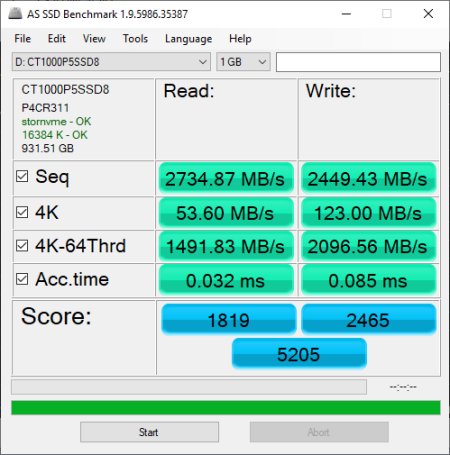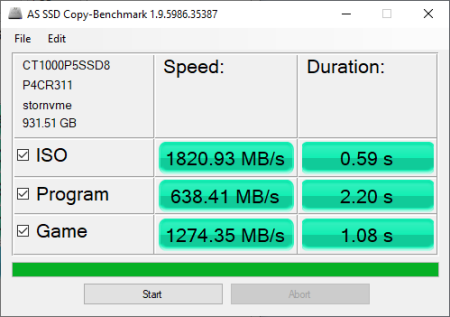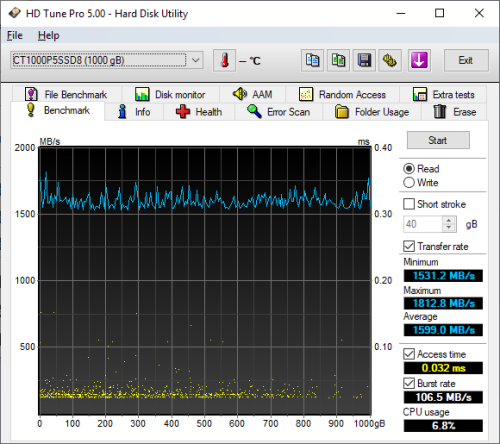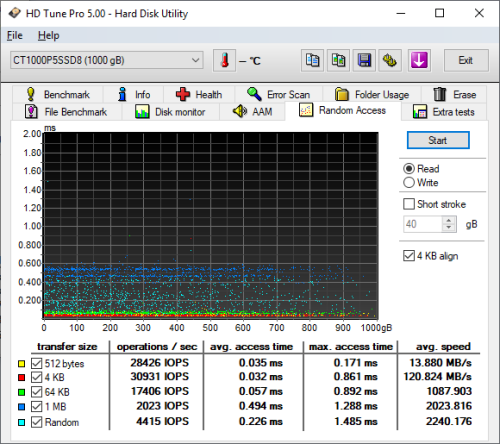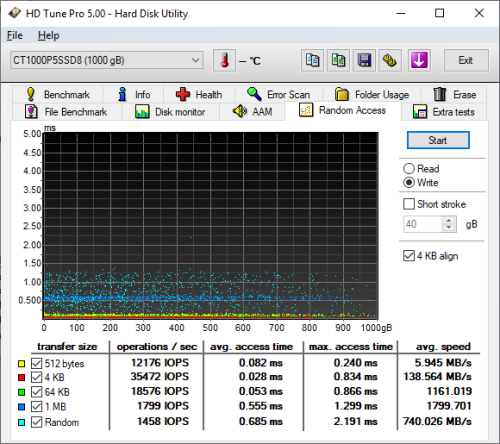![]()
![]()
Model: Silicon Power UD70 2TB M.2 PCIe Solid State Drive
Manufacturer: Silicon Power
Provided By: Silicon Power
Silicon Power is a relatively new name in the storage industry. Founded in 2003 by a group of professionals specializing in international business, global marketing and technical engineering, the company has already established itself as one of Taiwan's top manufacturers. With an eye for attractive and versatile design, Silicon Power has built its brand around the concept that its customers deserve products that represent who they are in life and mirror their personality. The end result is a variety of uniquely designed storage products including USB flash drives, memory cards and solid-state drives (SSD).
One of the latest additions to Silicon Power's line of solid state drives is the UD70. Designed for DIY system builders, casual gamers and video editors, this M.2 form factor drive is powered by Phison's PS5012-E12S controller and is available with up to 2TB of Micron's 96-layer QLC NAND flash. The UD70 also utilizes SLC Caching and a DRAM cache buffer to improve read and write performance as well as LDPC (Low-Density Parity Check) error correction, End-To-End (E2E) data protection and a RAID engine for enhanced data integrity and stability. To top it all off, the UD70 is equipped with an ultra-fast PCIe Gen3 x4 NVMe 1.3 interface and a dual self-cooling system to prevent sudden speed drops or damage of stored data caused by high temperatures.
The UD70 is available in 500GB, 1TB and 2TB capacities. For this review, Silicon Power sent us the 2TB version of the drive which is capable of delivering up to 3,400 MB/s sequential read and 3,000 MB/s sequential write speeds.
Needless to say, this is only a taste of what the UD70 has to offer. To give you an idea of what to expect, we'll take a closer look at Silicon Power's new PCIe SSD and then see how well it performs. Does the UD70 have what it takes? Can it deliver the value and performance we've come to expect from Silicon Power? Keep reading as we find out.
The UD70 comes in a small, black and white box. In addition to a plastic window which lets you see what the drive looks like, the packaging advertises some of the drive's key features including its 2TB capacity, support for NVMe 1.3, and 5 year warranty.
Physical Features:
The UD70 uses the 2280 form factor for M.2 (NGFF) SSDs. It measures 22 x 80 x 3.5 mm and weighs in at 8g. The drive also has an "M key" edge connector which provides PCIe SSDs with up to 4x lanes of bandwidth.
![]()
The UD70 uses Phison's PS5012-E12S controller chip. This PCIe Gen 3 x4 SSD controller supports eight channels with up to four chip enables (CE) per channel. The E12S is also compatible with 3D TLC/QLC NAND flash and offers features like end-to-end data path protection, thermal monitoring, SmartECC technology and a low-density parity-check (LDPC) ECC algorithm for improved drive reliability. The controller also supports AES-256, TCG Opal, and TCG Pyrite encryption along with APST, ASPM, and L1.2 power saving modes to maximize notebook battery life.
![]()
![]()
For the 2TB version of the UD70, Silicon Power opted to use Micron's 96-layer QLC NAND flash. Looking at the picture above, you can see that there are four 512GB NAND flash packages on the top of the PCB. The drive also has a single 512GB DDR3L DRAM chip that is used for caching.
The test system used in this review is equipped with an Intel Core i7-6700K CPU, GIGABYTE GA-Z170X-UD3 motherboard, 32GB (16GB x 2) of Crucial Ballistix Sport LT DDR4 memory, Samsung 960 PRO 512GB SSD and a GIGABYTE GeForce GTX 1060 WINDFORCE OC 6G graphics card. For the operating system, I used the latest version of Windows 10 Enterprise.
To test the performance of Silicon Power's UD70 SSD, I ran a series of benchmarks using CrystalDiskMark, HD Tach RW, ATTO Disk Benchmark, AS SSD, HD Tune Pro, Anvil's Storage Utilities, Iometer and PCMark. For comparison, I've also included test results from the Samsung 980 PRO, SK hynix Gold P31, Crucial P5, ADATA SWORDFISH, ADATA FALCON, Lexar NM610, Silicon Power P34A60, Patriot P300, Plextor M9PG Plus, Plextor M9PY Plus, ADATA XPG SX6000 Pro, Western Digital WD Black SN750, Samsung 970 EVO Plus, ADATA XPG SX8200 Pro, Crucial P1, ADATA XPG SX8200, Western Digital WD Black NVMe, Samsung 970 EVO, Samsung 970 PRO, Plextor M9Pe, Plextor M8Se, Patriot Hellfire, ADATA XPG SX8000, Samsung 960 PRO, Toshiba OCZ RD400, Samsung 950 PRO, Samsung 870 QVO, Silicon Power P60, SK hynix Gold S31, ADATA Ultimate SU750, Samsung 860 QVO, Samsung 860 PRO and Crucial MX500.
![]()
As I mentioned earlier, the UD70 uses Phison's PS5012-E12S controller chip. Looking at the screenshot above, you can see that it performs equally well with both incompressible (0%) and compressible (100%) data.
CrystalDiskMark 5.1.2:
First, I ran a few quick tests using CrystalDiskMark. This benchmark tool measures the performance of a storage device by testing its sequential read and write speeds as well as its random read and write speeds using blocks 512K and 4K in size.
According to Silicon-Power, the 2TB version of the UD70 is capable of reading at 3,400 MB/s and writing at 3,000 MB/s. While the drive had no problems reaching its rated read speed, it came up a bit short in CrystalDiskMark's sequential write speed test.
The UD70 performed equally well when using highly compressible 0x00 (0 Fill) data. This time around, the drive was able to read at 3,477 MB/s and write at 2,970 MB/s.
HD Tach RW 3.0.4.0:
Next, I used HD Tach to test the UD70's read, write and burst speeds as well as its seek times and CPU usage.
![]()
Looking at the screenshot above, you can see that the UD70 had average read and write speeds of 1,771.0 MB/s and 1657.4 MB/s respectively, as well as a burst speed of 1228.4 MB/s. The screenshot also shows that it uses some sort of SLC caching. The drive starts writing at about 1,700 MB/s and then drops to about 1,600 MB/s when the write operation exceeds the size of the cache.
ATTO Disk Benchmark 4.01:
I also used ATTO Disk Benchmark to test the UD70's sequential read and write speeds. The tests are run using blocks ranging in size from 0.5KB to 8192KB and the total length set to 256MB.
When tested with ATTO, the UD70's read speeds topped out at about 3.10 GB/s and its write speeds at 2.77 GB/s.
AS SSD:
AS SSD is a relatively new benchmark designed specifically for solid state drives. The application contains five synthetic tests used to determine the sequential and random read and write performance of a drive.
AS SSD also includes a copy benchmark. This test copies an ISO (two large files), program (many small files) and game (small and large files), returning the speed and duration of each.
HD Tune Pro 5.75:
Next, I ran a series of tests using HD Tune Pro. This hard disk utility measures a drive's performance by testing its sequential read and write speeds as well as its access time, burst rate and CPU usage. For this review, I'm also going to use it to benchmark the UD70's random read and write speeds, random access times and the number of operations per second.
The UD70 didn't perform as well as expected when benchmarked with HD Tune. The drive had average read and write speeds of 1543.9 MB/s and 1644.8 MB/s, respectively.
When reading 4KB blocks, the UD70 reached 34,578 IOPS and had an average speed of 135.071 MB/s. The drive was faster when writing, reaching 50,075 IOPS with an average speed of 195.606 MB/s.
Anvil's Storage Utilities:
Anvil's Storage Utilities is another benchmark designed with SSDs in mind. The standard storage benchmark measures a drive's performance by testing its transfer speeds, access times and IOPS.
![]()
Iometer:
Lastly, I ran a series of tests using Iometer. This tool can be configured to benchmark a number of things. In this case, I used it to measure the UD70's read and write speeds and the number of operations per second. The tests were run using random bytes and a queue depth of 3.
![]()
The UD70's performance was very similar to what we saw in our other tests. The drive was able to read at 3029.89 MB/s and write at 2815.01 MB/s.
![]()
The UD70 also performed well when doing random reads and writes. In our tests, the drive was able to read at 313.41 MB/s and write at an impressive 812.30 MB/s.
![]()
Silicon Power really doesn't say what the UD70 is capable of in regards to IOPS. In our tests, the drive reached 80,232 random read IOPS and 207,950 random write IOPS. As with most drives, the UD70 performed better at higher queue depths. With four threads and the queue depth set to 32, it reached 332,428 random read IOPS and 432,393 random write IOPS.
PCMark 8 - Storage Test:
PCMark 8 is a complete benchmark for Windows. It includes five benchmark tests, each designed around a specific scenario. The storage benchmark measures drive performance using real-world traces recorded from Adobe Creative Suite, Microsoft Office and a selection of popular games.
![]()
PCMark 8 also includes a consistency test which measures the performance consistency and degradation tendency of a storage system. The test reports the performance level at the start, the degraded steady-state and the recovered state as well as the number of iterations required to reach the degraded state and the recovered state. For this test, we are focusing on the Adobe Photoshop (Heavy) trace and will look at both the bandwidth and latency of the drive
![]()
![]()
The UD70 didn't do as well as some of the other drives in this test. Its bandwidth dropped below 100 MB/s during the degradation phase, pushing its latency above the 300ms mark. The UD70's performance increased somewhat during the recovery phase. However, it still lagged behind the Crucial P5, SK hynix Gold P31 and Silicon Power's own P34A60, topping out at 966 MB/s.
PCMark 10 - Full System Drive Benchmark:
PCMark 10's Full System Drive Benchmark uses a wide-ranging set of real-world traces from popular applications and common tasks to fully test the performance of the fastest modern drives. This benchmark produces an overall score as a measure of drive performance. Comparing devices is as simple as comparing scores. The tests also measure and report the bandwidth and average access time performance for the drive.
![]()
The UD70 ended up in the middle of the pack in PCMark 10's Full System Drive Benchmark. While faster than many of the entry-level drives, it trailed behind the Plextor M9PG, SK hynix Gold P31 and Crucial P5 by a sizeable margin.
TRIM Performance:
While SSD's offer many benefits, there are some downsides to using flash memory. One of the biggest issues people run into is performance degradation. Over time, an SSD will run out of fresh blocks and will have to write over data the file system has marked as deleted. This procedure is very complicated and can slow an SSD's write speeds considerably.
To fix this problem, most manufacturers have added TRIM support to their SSDs. The TRIM command allows an operating system, such as Windows 10, to tell an SSD which data blocks are no longer in use. Using this information, the drive pro-actively erases these blocks and adds them to the free block pool.
![]()
To test the UD70's TRIM and garbage collection functions, I first put the drive in a "dirty" state. I used Iometer to fill 80% of the drive and then ran a random write test for 30 minutes. Looking at the screenshot below, you can see that the UD70's average read and write speeds dropped to 1421.47 MB/s and 356.03 MB/s, respectively.
![]()
Silicon Power UD70 - Dirty
To see how well the UD70 could recover, I let the computer sit for about 30 minutes and then reran the test. The drive wasn't able to reach the factory fresh performance shown in our earlier tests. However, its sequential write speed jumped up to 2533.90 MB/s.
![]()
Silicon Power UD70 - After TRIM
Lastly, I used Parted Magic to perform a secure erase on the UD70. With the drive wiped clean, it had average read and write speeds of 2783.89 MB/s and 2578.35 MB/s, respectively.
![]()
Silicon Power UD70- Secure Erased
Dual Self-Cooling System:
While PCIe SSDs like the UD70 offer impressive performance, they also generate a good amount of heat. To combat this, Silicon Power incorporated a dual self-cooling system that operates via active state power management (ASPM) and autonomous power state transition (APST). In addition, thermal throttling effectively monitors and controls the temperature to prevent sudden speed drops or damage of stored data caused by high temperature.
Thanks to ASPM and ASPT, the UD70's temperature hovered around 28 ºC when idle. Under heavy loads, the drive reached temperatures as high as 63 ºC when reading and 69 ºC when writing.
![]()
These temperatures had no impact on the UD70's read speeds. However, when it would hit about 69 ºC, thermal throttling would kick in and slow the drive's sequential write speed. Instead of an sudden drop in performance though, the UD70 gradually slowed until it reached a speed where the temperature did not exceed 69 ºC.
![]()
If you're going to push the UD70 hard and don't want thermal throttling to activate, you may want to consider adding a cooling fan or attach a heatsink to the drive. With a 12cm fan blowing over the drive, the drive peaked at 54 ºC when reading and 62 ºC when writing. As a result, thermal throttling did not occur.
![]()
Final Thoughts:
The Silicon Power UD70 is a great choice for the casual gamer or video editor looking for a fast, yet affordable, PCIe SSD that keeps its cool no matter how hard you push it. This compact, M.2 form factor drive is powered by Phison's PS5012-E12S controller and is available with up to 2TB of Micron's 96-layer QLC NAND flash. Combine this with an SLC cache, DRAM cache buffer and a PCIe Gen3 x4 NVMe 1.3 interface and you have a drive capable of delivering more than six times the performance of your average SATA SSD. In our sequential read and write tests, the 2TB version of the UD70 was able to read at speeds as high as 3,477 MB/s and write at speeds in excess of 2,970 MB/s. It also did very well in our random write tests, producing nearly 208,000 IOPS at low queue depths.
Of course, fast read and write speeds aren't the only things the UD70 has to offer. The drive is engineered with a dual self-cooling system that did a pretty good job of keeping temperatures down without the need for a heatsink. The UD70 also employs features like LDPC (Low-Density Parity Check) error correction, End-To-End (E2E) data protection and a RAID engine for enhanced data integrity and stability as well as AES 256-bit encryption for data security. To top it all off, the UD70 is covered by a five year warranty.
The UD70 is available now in 500GB, 1TB and 2TB capacities. Prices on Silicon Power's website start at $57 and go up to $190 for the 2TB version reviewed here.

Highs:
- Available in 500GB, 1TB and 2TB capacities
- PCIe 3.0 x4 interface with NVMe protocol
- Phison PS5012-E12S controller
- Equipped with Micron 96-layer 3D QLC NAND
- Excellent sequential and random read and write performance
- Dual self-cooling system
- Small M.2 2280 form factor
- LDPC ECC technology, End-To-End (E2E) data protection and RAID engine
- SLC caching and DRAM cache buffer
- AES 256-bit encryption
- Reasonably priced
- 5 year warranty
Lows:
- DRAM cache smaller than other drives
- Write speed drops when SLC cache is full




